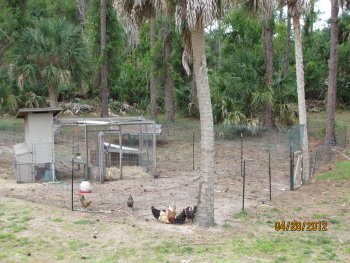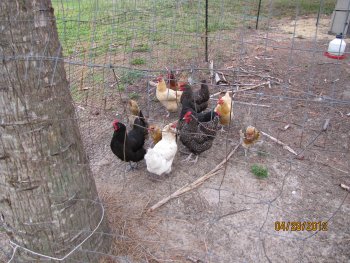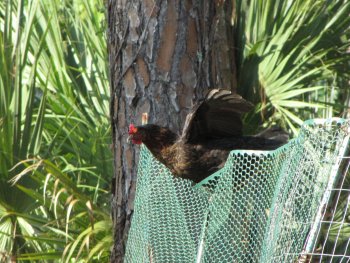Now that some time has passed while using the homemade automatic chicken waterer, I have since thought that maybe a pre-fabricated water delivery would be a little more ideal. The original design utilized items that were available, and could be reused or repurposed. This works great, but does still get dirty. Mostly from sand and stuff that gets in it and settles at the bottom. So an item I found on Amazon.com would serve this purpose. The only thing that I could see being a problem is that the sun would get inside and create algae. This really should not hurt the chickens, but does not look good at all. I mean, I wouldn’t drink out of it if there was algae visible. This would keep the dirt and poop out of the water though.
The BriteTap Chicken Waterer can be used in conjunction with my design. Click on the image or the link and it will take you to the amazon product page for purchase. Just substitute the BriteTap Chicken Waterer with the “cup” in my design, and you’ll have a clean, serviceable, chicken waterer that will last a long time. Make sure and design the position so the chickens cannot roost on top of the reservoir (or the water delivery device).
I will find out how big the hole has to be, but if you are set up to drill the hole for the toilet fill valve, then the tap for the BriteTap Chicken Waterer should be similar. After reading some of the “answered questions” on Amazon, it does come with a plastic nut that secures the unit to any reservoir. Most of the responses are from people that used a cooler as their reservoir. I guess it all depends on how much water your chickens drink. My chickens drink a lot of water. So having the automatic chicken waterer allows for fresh water to be supplied and they never run out.
In South Florida, it gets real hot in the summertime. This season is from late May through September. So I usually worry about the water getting hot, and getting algae build-up, so protection from the sun is best. Also, the sun will destroy plastic over time, so trying to position the watering station to be in the shade as much as you can is best. Also, design your situation so that the unit is protected from the chickens and the elements. This will help the watering station last longer, and less maintenance time. All in all, once the reservoir is put together, the water delivery system can be changed out periodically as your experience grows and your needs are more refined.
In the winter time, the weather is very nice, and freezing is not something that we typically worry about. The sun is still a factor, because direct sunlight will heat up the water too much. Freezing does occur, and the shock is more the problem than the cold itself. I would think that an aquarium heater would keep the reservoir from freezing. The supply line, might be a different story though. It may benefit to have a line that can be drained during this period, if this is a threat. Then the bucket or reservoir can be filled by hand while stored in a place that won’t freeze.
A water hose fitting can also be in the design to have it more on a mobile status during the design phase.


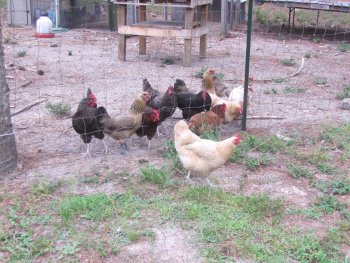

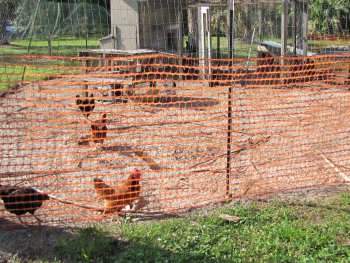
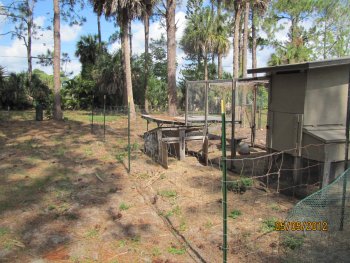 This is the next chapter of “Poultry Prison”. In the previous post, I discussed the idea of adding a small fence (3′) on top of a larger fence (4′). The test project worked and we have had no escapees. Our chickens don’t seem to mind. The final chicken fence height is 7′.
This is the next chapter of “Poultry Prison”. In the previous post, I discussed the idea of adding a small fence (3′) on top of a larger fence (4′). The test project worked and we have had no escapees. Our chickens don’t seem to mind. The final chicken fence height is 7′.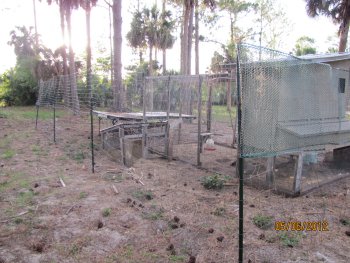

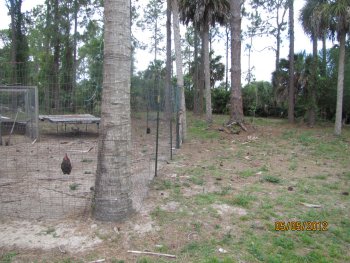
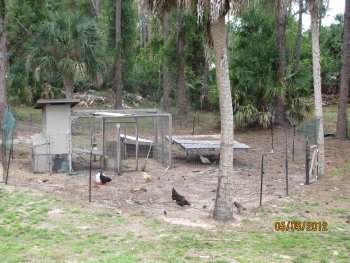


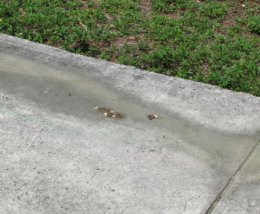
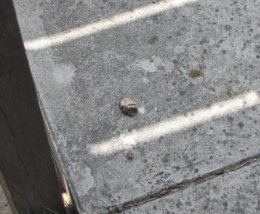
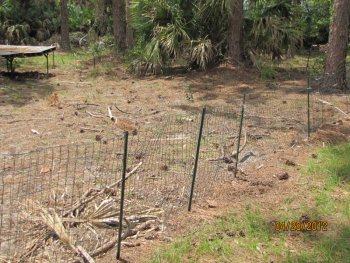
 After much time, I was able to get some pre-owned 4 foot sturdy fence, and I found some beefy 6 foot temporary fence posts at the hardware store. So using the trees and these new found fence posts, I put the 4 foot fence up. The photos you see are our first go at it. If this works, I will expand it to encompass more space for them to roam. I extended the 6′ fence posts with the other (salvaged) fence posts so about 7′ or 8′ is actually out of the ground. Some places I used some 3′ rabbit fence on top of the 4′ fence, and other places I used the plastic chicken wire on top. The rabbit fence holds up better, but it does not matter as long as they don’t fly over it. We were not as concerned with all the pot holes they leave in our yard (everywhere), as we were with the land mines on the concrete walks.
After much time, I was able to get some pre-owned 4 foot sturdy fence, and I found some beefy 6 foot temporary fence posts at the hardware store. So using the trees and these new found fence posts, I put the 4 foot fence up. The photos you see are our first go at it. If this works, I will expand it to encompass more space for them to roam. I extended the 6′ fence posts with the other (salvaged) fence posts so about 7′ or 8′ is actually out of the ground. Some places I used some 3′ rabbit fence on top of the 4′ fence, and other places I used the plastic chicken wire on top. The rabbit fence holds up better, but it does not matter as long as they don’t fly over it. We were not as concerned with all the pot holes they leave in our yard (everywhere), as we were with the land mines on the concrete walks. 